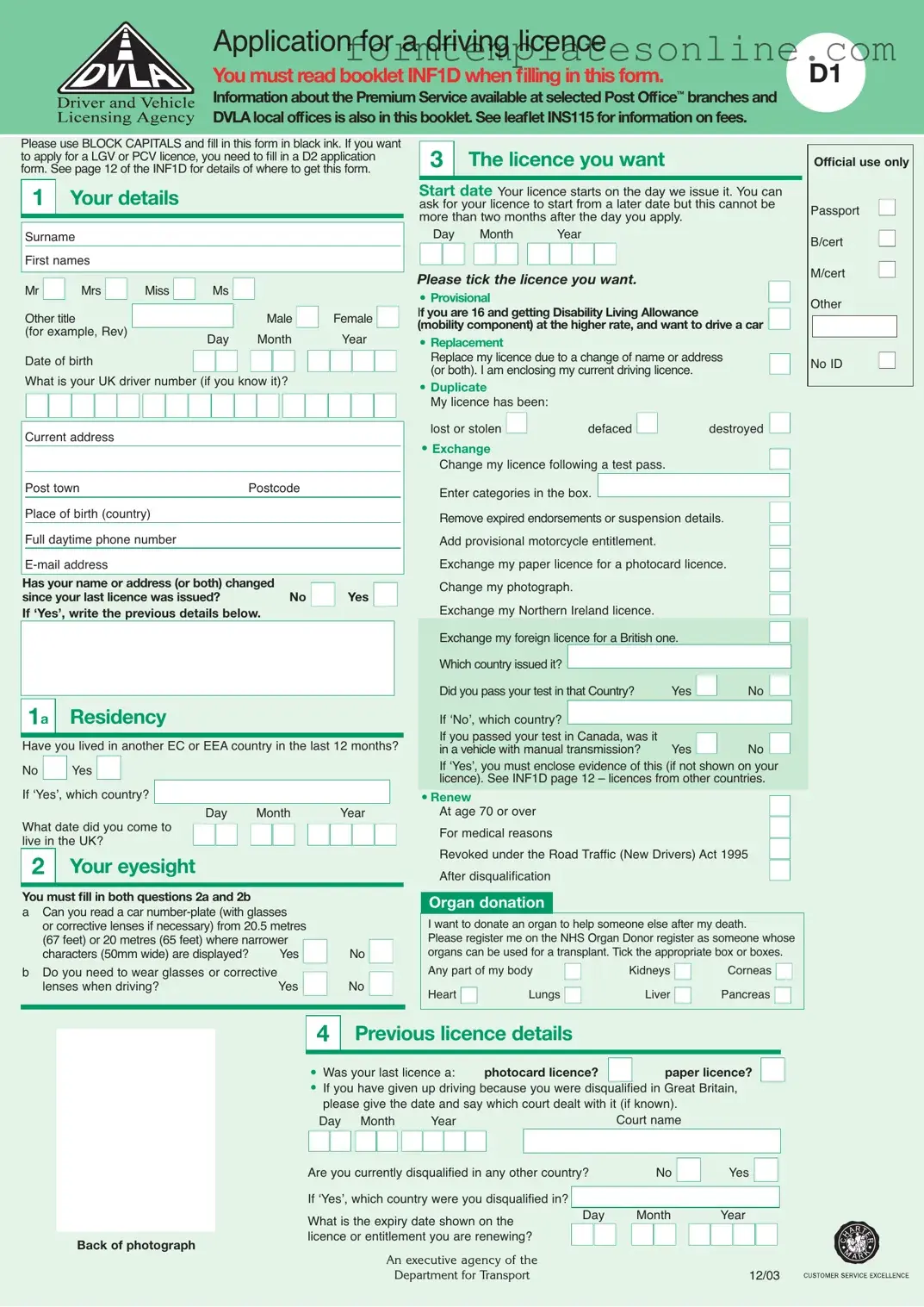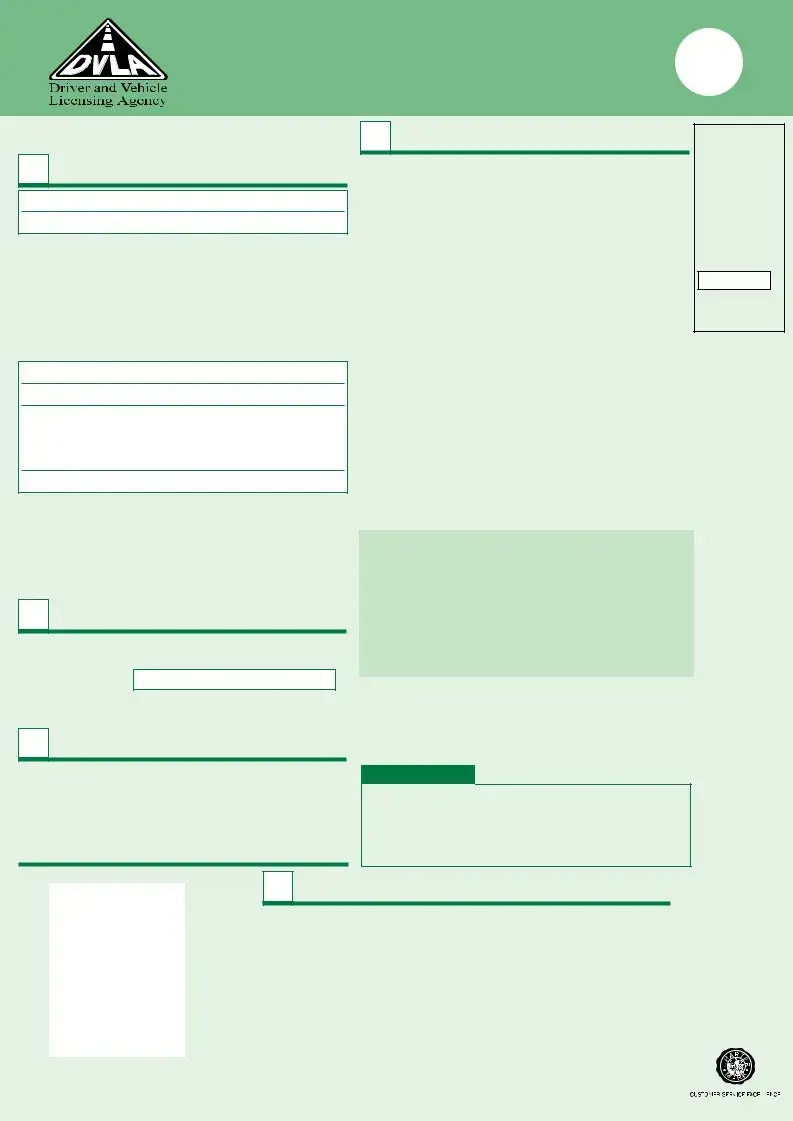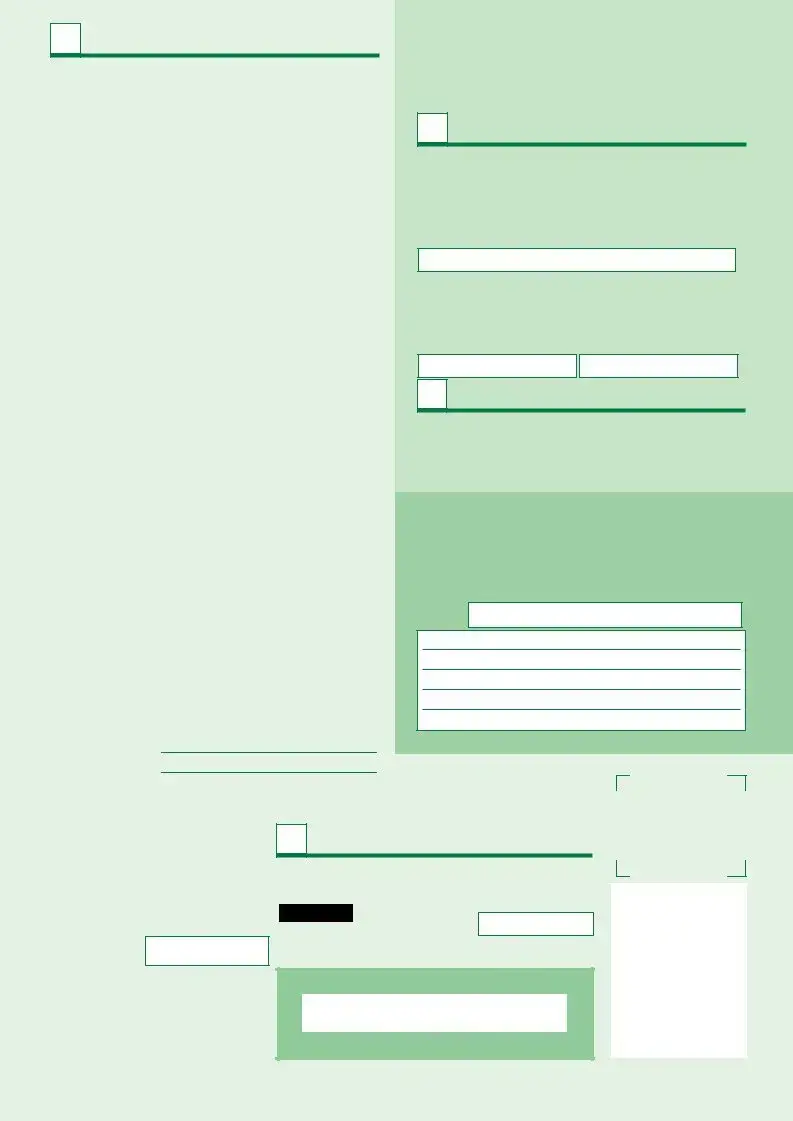What is the D1 DVLA form used for?
The D1 DVLA form is primarily used to apply for a driving licence in the UK. This includes applying for a provisional licence, renewing an existing licence, or exchanging a foreign licence for a British one. It also allows individuals to make changes to their personal details, such as their name or address, on their driving licence.
Who needs to fill out the D1 DVLA form?
Anyone who wishes to apply for a driving licence, renew an existing licence, or make changes to their current licence must complete the D1 form. This includes first-time applicants, those who have changed their name or address, or individuals who have lost their licence.
What information do I need to provide on the D1 form?
The D1 form requires various personal details, including your full name, date of birth, address, and contact information. You will also need to provide information about your previous driving licence, if applicable, and answer questions regarding your eyesight and health conditions that may affect your ability to drive.
What should I do if my eyesight does not meet the required standard?
If you cannot read a car number plate from the required distance, you may need to seek corrective lenses or glasses before applying for your driving licence. It is important to ensure that your eyesight meets the legal standards for driving, as failing to do so could affect your application.
How do I submit the D1 DVLA form?
You can submit the D1 form by mailing it to the DVLA address provided on the form. It is advisable to include any required documents, such as proof of identity and payment for the application fee. Some Post Office branches also offer a premium service for submitting applications, which may expedite the process.
What documents do I need to provide with my application?
You will need to provide documents that confirm your identity, such as a passport or a birth certificate. If your name has changed, you must also include documents like a marriage certificate or a deed poll. Ensure that all documents are original, as photocopies are not accepted.
Is there a fee to apply using the D1 form?
Yes, there is a fee associated with applying for a driving licence using the D1 form. The exact amount can vary depending on the type of application you are making. It is recommended to refer to the leaflet INS115 for the latest fee information and payment methods.
What happens if I make a mistake on the D1 form?
If you make a mistake on the D1 form, it is important to correct it before submitting your application. Errors can lead to delays or the rejection of your application. If you realize a mistake after submission, contact the DVLA as soon as possible to discuss your options.
How long does it take to receive my driving licence after submitting the D1 form?
The processing time for a driving licence application can vary. Generally, it takes about three weeks to receive your licence after the DVLA has processed your application. However, if there are any issues or if additional information is required, this may extend the time frame.




